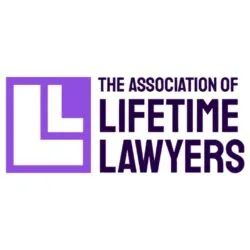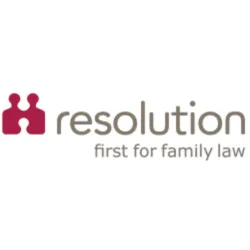
Discrimination Under the Equality Act 2010
This Fact Sheet provides a brief overview of the rights afforded to workers under the provisions of the Equality Act 2010. The rights apply in England, Scotland and Wales only.
The Act covers all forms of discrimination in the workplace, including selection for a job, training, promotion, work practices, dismissal or any other disadvantage such as harassment because of a ‘Protected Characteristic’.
What is a Protected Characteristic?
The Act prohibits discrimination because of a Protected Characteristic. Protected Characteristics include:
- Sex
- Race
- Disability
- Age
- Sexual orientation
- Religion or belief
- Gender reassignment
- Marriage and civil partnership
- Pregnancy and maternity
Who is protected?
The Act covers all employment and applies to apprentices, those working under a contract of employment and the self employed working under a contract personally to do work. Ex-employees can also make a claim against a former employer, if they are complaining about something that was closely connected to their employment.
Who is liable?
The employer is generally liable for acts of discrimination, harassment and victimisation in the workplace. However, individual employees may also be liable, e.g. if they have subjected a colleague to harassment related to a Protected Characteristic.
Types of Discrimination
Direct Discrimination
Direct discrimination occurs when an employer treats a worker less favourably than he treats others because of a Protected Characteristic.
In order to determine whether someone is directly discriminated against a comparison has to be made (for example a woman has to compare herself to a man if claiming sex discrimination or a Sikh has to compare himself to someone of a different religion/belief). The circumstances of the comparator must be the same or not materially different.
The law covers those who are discriminated against because they are perceived to have a particular Protected Characteristic or because they are associated with someone having a particular Protected Characteristic.
Examples include:
- In an interview for a job the employer only asks female applicants about their domestic circumstances
- A white British man with fewer qualifications and/or less experience than a black African man is appointed to the job or the promotion for which they both applied
- A woman is told that she would not be considered for a job because it is “dirty work” or because there is “a lack of decent toilet facilities”
- A Muslim is not encouraged to meet clients or invited to social events.
- A homosexual man is subjected to homophobic comments.
Indirect Discrimination
Indirect discrimination arises when an employer applies a “provision, criterion or practice” (such as a policy) which is not intended to treat anyone less favourably, but which in practice has the effect of disadvantaging a group of people with a particular protected characteristic. For example, a requirement to work full time might affect more women than men.
Employers can only defend indirect discrimination if they can show that what they did was “a proportionate means of achieving a legitimate aim”.
Harassment
There are three types of unlawful harassment under the Act:
- An individual is subjected to unwanted conduct related to a Protected Characteristic with the purpose or effect of violating their dignity or creating an intimidating, hostile, degrading, humiliating or offensive environment. That individual need not be the butt of the unwanted conduct; if they feel that their dignity has been violated or that an offensive environment has been created as a result, they are also protected by the legislation.
- Alleged that the discriminator or any other person has contravened the Act.
Bringing a Claim
Employees or job applicants who feel that their employer (or potential employer) has
discriminated against them or has victimised them can bring a claim to an Employment Tribunal. Claims must be brought within three months less one day of the act complained of.
Where discrimination has occurred over a long period of time then the claim must be brought within three months less one day of the last act in a series of acts.
Where a Tribunal finds that a claim is well founded, it can make:
- An Order requiring the employer to pay compensation to the Claimant e.g. for financial losses and injury to feelings. There is no limit on the amount of compensation which can include loss of earnings (past and future), loss of pension rights, interest and other losses. Compensation for injury to feelings will reflect the seriousness of the discrimination and
the effect on the employee. - A recommendation that the Respondent takes specified actions within a specified time which the Tribunal feels are practicable for the purpose of removing or reducing the adverse effects of the discrimination on the Claimant.
Unwanted “conduct” includes spoken or written words, jokes, graffiti or other conduct. It also applies to those subjected to unwanted conduct because of another person’s race. So, for example, an employee who is subject to offensive comments about their black African partner will be protected under the Act.
“Conduct” is only regarded as harassment when all the circumstances are taken into account (including the perception of the person at the receiving end of it).
- Someone engages in unwanted verbal, non verbal or physical conduct of a sexual nature that has the purpose or effect of violating dignity or creating an intimidating, hostile, degrading, humiliating or offensive environment.
- Someone treats a person less favourably because he or she rejected unwanted conduct of a sexual nature.
Examples of sexual harassment include the following:
- Physical harassment
- Unwanted sexual comments or personal comments about appearance
- Non verbal harassment such as unwanted gestures or displays of pornographic
pictures
The victim does not have to demonstrate any financial or other specific loss. It is enough that his or her working environment has become intimidating, hostile or offensive.
Victimisation
Some workers may be deterred from exercising their rights under the Act or from supporting others who wish to exercise their rights because they fear they will be victimised by their employer.
The Act guards against this by making it unlawful for an employer to victimise an individual who, in good faith:
- Brought proceedings under the Act or previous discrimination legislation
- Gave evidence or provided information in connection with proceedings that someone else brought
- Have done anything else such as raising a grievance or giving evidence in someone else’s grievance
- Made allegations of a breach of the Act or previous discrimination legislation
Special provisions relating to Disability
The Act provides further protection for workers with a disability in that it places on the employer a duty to make reasonable adjustments and also prohibits unfavourable treatment arising from disability. Further details can be found in our Disability Discrimination Fact Sheet.
Are there any exceptions?
Occupational requirement
The Act does not apply when the employer can show that there is an occupational requirement to do with the nature or context of the work which means they need to recruit someone with a certain characteristic.
The occupational requirement applies only to direct discrimination in recruitment, promotion, transfer and training and not to the way in which an employer affords access to benefits, facilities or services.
Examples include:
Reasons of decency or privacy, for instance where the job involves physical contact or people may be undressing (say, in a changing room).Provision of personal services such as rape counselling.
How do I prove my case?
Establishing that discrimination occurred is not straightforward. Sufficient evidence must be provided to enable a Tribunal to conclude that on the balance of probabilities (i.e. more likely than not) an employer discriminated against an employee because of a Protected Characteristic.
Not surprisingly, it is rare to find overt evidence of direct discrimination. Few employers are prepared to admit that they have discriminated against someone and those who are aware of the law may have been at pains to appear to have acted lawfully.
Whether or not a Tribunal considers that there is evidence that discrimination occurred will often depend on what inferences the Tribunal can draw.
However, there will need to be some factual basis upon which the Tribunal can make its finding. It therefore helps if the claimant can produce any relevant letters or documents. In cases of sexual harassment, it is useful if the employee makes a note of the key incidents and the dates on which they took place.
How do claimants get information from their employer?
Workers can request information from their employer about their complaint. There are standard forms for asking and answering questions (the questionnaire procedure).
A questionnaire can be sent to the employer any time before a claim is lodged at the Tribunal or within 28 days of a Tribunal claim being lodged. If the employer fails to answer the questions within eight weeks, a Tribunal may draw an inference of unlawful discrimination.
Under current Government proposals, the questionnaire process is likely to be scrapped with effect from 6 April 2014.
What time limits apply?
Claims must be brought within 3 months less one day of the act of discrimination that the person is complaining about. In exceptional circumstances the three month time limit may be extended.
Where the discrimination has occurred over a long period of time, this may amount to a continuing act extending over a period. A claim must then be brought within three months less one day of the last act in the series of acts.
What remedies are available?
There are three remedies available to a Tribunal:
- Declaration
- Compensation
- Recommendations
A declaration is a statement of the Tribunal’s findings, e.g. that a worker has been subject to direct discrimination.
Compensation
Compensation can be awarded for injury to feelings and financial losses, if there are any. There is no limit to the amount of compensation, which can include loss of earnings (past and future), loss of pension, interest and any other outlays associated with the discrimination.
The amount of compensation for injury to feelings can vary enormously. The person’s reaction to the discrimination and vulnerability will be considered, and also the severity of the discrimination.
Aggravated damages can also be awarded if the employer has behaved in a high-handed malicious or insulting way.
Claimants can also ask for compensation for personal injury if they have been made ill by the discrimination. Claimants need to produce a medical report to support such cases.
Recommendations
The Tribunal can make recommendations for the purpose of preventing or reducing the effect of the discrimination.
If the employer fails to comply with a recommendation, then the Tribunal may order the compensation to be increased.
For more information on discrimination and other Employment Rights, please call our Employment Rights team on 033 3344 9603 or email David Sorensen.










